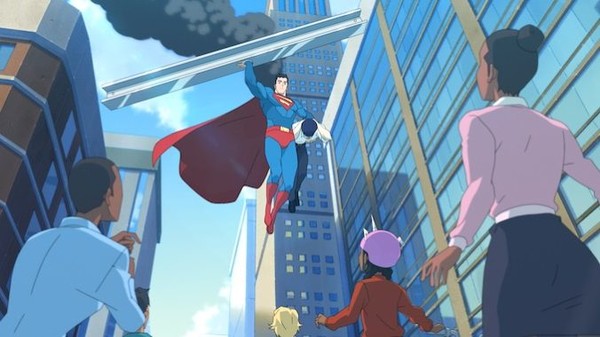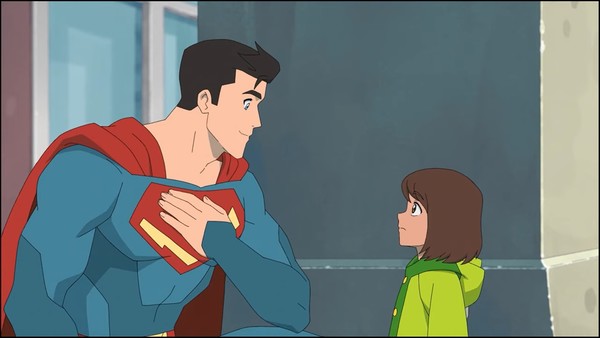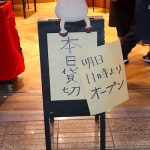In addition to being an anime fan, I watched Bruce Timm’s Superman as a child. Superman developed into the superhero with the largest guns, the largest shield, and the biggest heart after seeing Justice League and Superman: The Animated Series cartoons. Even though I was a bigger admirer of Batman at the time, I continued to consider the things he said and did. He would refer to himself as their shield, but his teammates would label him their finest hitter. Even if the blows aren’t usually as hazardous to him, he nevertheless takes more of them in order to spare others from having to, and they can still cause a lot of pain.

His concern for others encompasses not only his loved ones and coworkers but also everyone else. He will run down to save people, no matter the trouble, from villains bringing about the end of the world to animals stranded in trees. In order to assist reunite a missing girl with her mother, he will take the opportunity to halt his pursuit of those attempting to track him down. The Superman Clark Kent who is nurtured by the Kents is proof in his tale of a humanity that also exists in the positive abstract: compassion, generosity, and kindness towards one’s fellow American, human, and person. This is true even though Clark Kent is not technically from Earth and is not even physically human.
That made him an iconic figure, yet lately we’ve seen more of an anxious Superman hovering over people rather than a pleasant Superman walking beside them. Though darker and more gritty Superman storylines have been told in comic books previously, Zack Snyder’s disconnected and conceited portrayal of the character in the newest film has been the most conspicuous mainstream interpretation of the character in the last ten years. Leaving artistic freedoms aside, a Superman guided solely by divine duty and devoid of human goodwill contradicts the good that Superman has always stood for.
My Adventures with Superman, which was greenlit prior to Snyder’s resignation as director of the DC films and was released after Snyder, presents a Superman that is distinctly lighter, more grounded, and… more anime, or anime-inspired. Giving anime the most of the credit for the new direction of Superman would be overreaching, since the program does a better job of modernizing Superman than it does of bringing him back to his original form. I would contend, though, that anime influences go beyond appearances and allusions.
My Superman Adventures: Anime Allusions
Anyhow, let’s start by talking on the more evident anime components. The animation for My Adventures with Superman was done by South Korean Studio Mir, whose personnel had previously worked on the anime-influenced Avatar: The Last Airbender before moving on to produce Voltron: Legendary Defenders and The Legend of Korra, both of which had anime influences. “There’s a lot of anime that influenced us… Sailor Moon, yes, there’s a little magical girl. Dragon Ball, we talked about that a lot. We talked about Neon Genesis Evangelion and Gundam. Some of it is in the way things look. Some of it is in the titles having little references and Easter egg shoutouts to anime,” co-writing creator Josie Campbell said candidly in an interview.
The show makes references to every anime discussed in the conversation and more. The scene in which Clark gets his superhero suit in Episode 2 is reminiscent of Sailor Moon and other magical girl series’ miraculous transformation scenes. Before the blue energy transforms into various elements of Superman’s recognizable blue suit, the camera pans over various parts of his body that are covered in it.
In Episode 7, the interdimensional trickster chaos-being Mr. Mxyzptlk is redesigned to resemble the inhuman otherworldly demons and deities of Dragonball Z. The episode is named “Kiss Kiss Fall in a Portal,” a nod to the iconic opening line of Ouran High School Host Club’s OP “Sakura Kiss,” and an appropriate title for an episode that revolves around the developing romance between Clark and Lois Lane—as well as portals.
Episode 6 has the least subtly referenced anime. With faces so big they span their whole stubby torsos and make up most of the mechs’ features, Monsieur Mallah and the Brain erected for self-defense resemble the distinctive and cartoonishly styled gunman mechs of Gurren Lagann.
Giant military robots are reminiscent of Gundam, but the sharp “heads,” triangular “chests,” slender “waists,” and jagged “shoulders” that are presented at the start of the episode also resemble Evangelion’s mechs in appearance. The parasite suit’s need to biologically interface with its user—Eva units are both mechanical and organic constructs—and the predatory bestial appearance it assumes when the suit is powered up—Eva units resemble wild beasts when they go out of control or have their berserk modes activated—indicate an even closer resemblance between the Evangelion influences in Episode 3’s new supervillain origins for Tech Bro Ivo and Parasite. The parasite suit mutates into a massive monster or kaiju the scale of skyscrapers, like Godzilla, with the strength of a whole city behind it.
My Superman Adventures – Narrative from Anime
Now that we’ve covered anime references and aesthetics, let’s talk about potential effects on anime shojo and shonen storytelling. Shojo and shonen are not actual genres; rather, they are the marketing-targeted gender demographics of a narrative (shojo for girls, shonen for boys). Beyond disagreements over genre or demography, I’ll talk about how characters are developed differently in shojo and shonen literature. However, it should be noted that not all stories labeled as shojo or shonen cleanly fit into one gendered character approach over another. In fact, many stories, especially in today’s world, include plot aspects associated with both populations. All the same, these words are still helpful in story analysis.
In addition to having a more feminine appearance, shojo stories are known for being more emotive and willing to examine and probe the relationships and feelings of the characters. Before speaking up or urging others to speak up later, the characters in shojo series—who are typically female but can also be male—will normally take some time and space to reflect on how they and others feel in response to developments. “What do I think of them? What do they think of me? Why do I feel this way? Why do they feel the same about me?” and similar questions acquire a more romantic tone in shojo romances.
In addition to having a manly appearance, shonen stories are typically more instrumental in nature, with the main goal being to motivate the protagonists to take certain actions. Generally speaking, shonen shows focus on showing their male characters—who are typically but not always men—trying to accomplish something or considering how to do so. While it’s not a guarantee, characters in shonen series tend to prioritize acting over monologues as a means of expressing their emotions rather than dwelling on them for extended periods of time. When there is a relationship in a shonen manga, characters, particularly men, tend to focus more on doing actions for their love interests than on expressing their feelings for them.
The female protagonists in traditional shojo magical girl stories have more action-packed roles as fighters for others and against evil, all the while retaining a strong feminine element. Usually, the plot revolves around an ordinary girl who has magical abilities and then tries to strike a balance between her mundane existence and her fantasy side.
In the past, shonen battlers have not only provided their heroes with adversaries to fight, but they have also crafted their stories so that the protagonists begin weaker in strength and character and gradually strengthen both via training and combat. As their skills grow and become more proficient, their storylines develop and deepen.
In Japanese parlance, Superman stories are typically classified as shonen, however there are also strong shojo undertones in My Adventures with Superman. Set aside any references in order to concentrate on deeper narrative parallels: Superman and the magical girls are characters who are prepared for combat and who need to strike a balance between their heroic and ordinary sides.
This Superman comes in Metropolis knowing nothing about his Kryptonian origins and lacking all of his talents, more akin to the shonen battler model than earlier Superman origin stories where he arrives in Metropolis already knowing all about his beginnings. He learns more about Krypton and himself while using his usual powers to fight supervillains and aid others.
With all of its hitting and throwing, My Adventures with Superman is incredibly shojo, but it’s also very romantic. The program is about other characters like Lois as much as it is about Superman, as implied by the title. The speed at which Clark and Lois get together is swift but natural in contrast to many anime romances and superhero cartoons, which are both infamous for being slow and teasing about their pair connections (if any hooked up in the end). Clark is a country beefcake, and Lois is a charming tomboy. They have a simple romantic chemistry and are physically drawn to one another. But in the end, their candid communication about their mutual attraction is what keeps their romance going. Tragically, their lack of open communication before this change almost caused their relationship to end. Shonen romanticism isn’t entirely absent from the program, either. Clark protects Lois from a bullet laser turret while also getting her coffee and roses. Lois is the more outspoken partner of the two, and she inspires Clark to be a more assertive reporter by setting an example.
My Adventures with Superman isn’t just an anime Easter egg hunt or a more anime retelling of the world’s most famous superhero; I’ve talked about anime references and storytelling influences in the show. In fact, the article title isn’t “Anime Influences in the New Superman Show,” but rather “How Anime Helped Save Superman.” My Adventures with Superman brings a newfound trust in the selfless kindness of superheroes to the greater Superman canon by including stories from anime. While Snyder’s film temporarily took the West by storm, it restored faith in Japan’s perception of superheroes.
I may be using a stick to poke the Snyder fanbase here. I’ll try to head off any potential criticism by pointing out that I’m not the first to criticize Snyder’s Superman.
Fans of Snyder have defended Superman, calling it a masterful example of dark deconstruction. I am not against dark stories, to be honest. I’m not against genre deconstruction; in fact, I’m a fan of Gen. Urobuchi, aka the “Urobutcher.” Madoka Magica by Urobuchi is a fantastic example of the magical girl genre being deconstructed, and I adore it. Deconstructions are a storytelling technique that authors can use to challenge preconceived notions and conventions of specific tropes or genres to the point of breaking them down. From there, they can use the pieces that have been torn out to create new interpretive possibilities for those tropes and genres. It’s similar to breaking down old proteins into their amino acids before reforming them into new proteins.
However, from what I gather, the main reason for the greater annoyance with the way the Man of Steel has been portrayed in Snyder’s Man of Steel and Batman vs. Superman isn’t actually due of the more cynical portrayals of Superman stand-in characters. Critics have praised The Boys’ Homelander and Invincible’s Omniman as two examples of wicked supermen. The problem lies in the fact that Superman is portrayed in Hollywood blockbusters as a character who is almost entirely cynical, making him the ideal Superman for today’s casual superhero moviegoers and first-time viewers. Relying on deconstruction logic to support the idea that artists should be allowed to reimagine any figure they desire without facing backlash ignores the social impact that dehumanizing symbols like Superman has. He’s not just a figure.
For his earlier creators, Superman served as an example for mankind and a symbol that viewers were supposed to strive to.
Despite coming from extraterrestrial space, Superman is a regular guy whose strength is surpassed only by his generosity toward others. He was brought up as a human, fell in love with humanity, and now seeks to uphold mankind’s best traits—all stemming from his own encounters with human kindness through the Kents. Superman isn’t really “Superman” since he is superior to people. The best of them is embodied in him. He motivates listeners to live better lives. Of all the things to doubt and even subvert, why would you delegitimize something so positive?
Because we shouldn’t tell lies and it’s naive? Because it’s worse to be a hypocrite than a chump?
Superman’s basic persona has always been criticized, even before Snyder, for being naively out of touch and for having unrealistic expectations of a better, kinder, and just society. This is true even though Superman was originally published the year before America entered society War II.
“Dreams save us. Dreams lift us and transform us into something better.” Superman, in Superman vs. The Elite, states, “And on my soul, I swear that my dream of a world where dignity, honor, and justice are the reality we all share, I’ll never stop fighting. Ever.” in response to such criticisms.
Superman is saved by anime
Even in the face of growing cultural pessimism and with Spiderman being the country’s favorite Western superhero, Japan has continued to fight hard. Spiderman is one of the American superheroes that influences Kōhei Horikoshi’s well-known Japanese superhero franchise My Hero Academia, but it also draws inspiration from Captain America and Superman. All Might is frequently shown in the style of vintage Superman artwork, with light and shadow highlighting his muscular features and beaming smile. The only things more recognizable in the My Hero Academia universe than the “S” is his smile. The other two are his ideals akin to Superman and his practice of naming his fighting skills “Smash” after states in the United States.
All Might is aware of the cultural influence his identity has on his community, just like many previous Superman iterations. It encourages people to be kinder and more equitable in general. It promotes the use of power for the greater good rather than selfish interests. It encourages others to aspire to be heroes like him—not because of his talents, but because of his conviction that helping others is always worth the hassle. This includes Deku, who sacrificed his life to save others even though he was not born with superpowers. All Might saw more superheroes succumbing to ego, popularity, and self-interest and more people seeing superheroes cynically, much like Superman in stories like Superman vs. the Elite. Upon realizing it, he comes to the conclusion that his principles are more important than ever. Whether his reputation as the most heroic superhero will endure at all depends on his will to keep giving it everything he has, no matter how damaged it has become since his superhero days. He may not be able to withstand the punches as well as the Superman who inspires him, but he will never give up and he will never give up fighting.
Though they don’t always conform to Western stereotypes, Japanese media has produced a number of native superheroes who share Superman’s fundamental values of selflessness and altruism. You have your huge mech pilots, magical heroines, sentai rangers, masked Kamen Riders, Ultraman aliens, superpowered astro androids, superstrength cyborgs, and a cackling gold skull-man known as Golden Bat. However, Japan’s original superhero narratives have been impacted by a similar veil of cynicism, part of a bigger wave of pessimism that has been criticizing established societal ideas and authorities, much like Western superhero novels and heavily Western superhero-influenced anime like My Hero Academia. Concrete Revolution is the Watchmen of superhero anime, and no other anime does it as well.
Under the full title “Concrete Revolutio: Superhuman Phantasmagoria,” Oxford Reference defines “phantasmagoria” as “a fantastic or dreamlike sequence of real or imagined images,” which is a definition that fits in well with the show’s themes. Following Jiro Hitoyoshi and a public agency of superheroes tasked with keeping an eye on other superhuman beings in the purported interest of “protecting them,” the story soon reveals how much this goal conflicts with the more subtle intentions of the established authorities to “eliminate them” if necessary or if they are unable to “control them.” The political maneuvering of a government agency too afraid of superhumans to allow them to act freely, if at all, and the conceited cynicism of a media system that views superheroes as mere immature fantasies worth capitalizing on frustrate Jiro, an idealist who fervently believes that superheroes with ideals like Superman are real and forces for good.
Jiro struggles against the cynicism of the times.
All Might fights on in spite of the cynicism of the times.
Superman has to keep up the good fight despite the cynicism of the times.
They must battle on because they and its designers think that if they do, a better, kinder, more equitable society is conceivable. They think it’s real because they think people are good. People can still have faith in them and their valiant battle as long as they carry on fighting. That world will remain conceivable. Superheroes comparable to or even greater than them may rise to fight, and if they are defeated by too many blows in the future, they can be confident that someone else will step up to continue the ideal of enduring peace for humanity. Us and the other superheroes. Though it would be overstating things to say that anime saved Superman, I would like to think that through My Adventures with Superman, anime contributed to the continued belief in the selfless goodness of superheroes.



